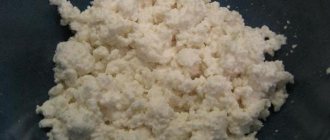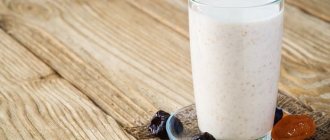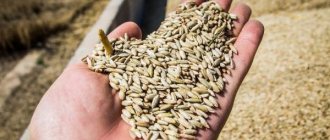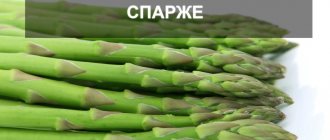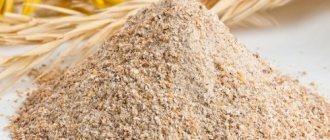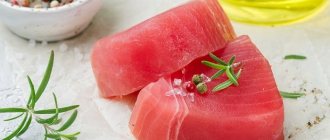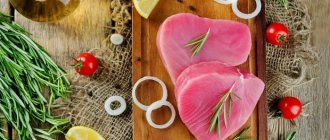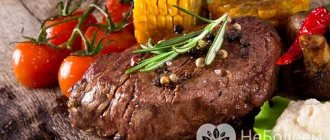The Benedictine monks gave the world a lot, including the creation of a recipe for Parmesan cheese. It is believed that their goal was to invent cheese that could be stored for as long as possible. It is thanks to this quality that it has gained popularity all over the world. True Parmesan is now a cheese made in Italy, which has a brittle structure and is produced only in certain provinces.
History of cheese
Few people know, but Parmesan is already more than 1000 years old. The idea that it was created by Benedictine monks is just a theory, but on the whole it is quite reasonable, since they produced their own food and it was they who needed products that could be stored for a long time. The process of creating original Parmesan is not as simple as it might seem. It is prepared using only the milk of local cows, as their diet includes the herbs necessary to create a unique taste.
Other manufacturers in all countries of the world who call their cheeses Parmesan, in fact, do not have the right to do so, since the name “Parmesan” itself bears only one type of cheese, which is produced in the Emilia-Romagna region.
Content:
- History of cheese
- How is Parmesan made?
- How is Parmesan stored?
- Use in cooking
- Compound
- Beneficial features
- Interesting facts about Parmesan
- Harm and restrictions
How is Parmesan made?
Cheese is produced every year, always on April 1 [1]. It is on this day that the milk from the evening milk is left to settle, and in the morning the cream is skimmed off, which will then be used to make mascarpone. The remaining milk, already skim, is mixed with morning milk, from which the cream is not skimmed.
This mixture is heated to 35 degrees, then the starter is carefully introduced into it. The starter should also be natural; in the original, calf's gastric juice is used for this. Warm milk begins to curdle, and this process continues until the milk turns into a solid curd. After this, it is removed, crushed and heated again, increasing the temperature to approximately 50 degrees. Thus, the last whey comes out of the cheese, which makes it so hard and capable of long-term storage [2].
Kinds
Parmesan cheese (all types of product are shown in the photo) in Italy is prepared only from mid-spring to late autumn. This rule is due to the period when green grass appears in the meadows where cows graze. Thanks to fresh greens, cow's milk is rich in fat. The milk is collected in the morning and evening, left to curdle overnight, and fresh milk is added in the morning.
They wait until the liquid reaches the desired consistency and then heat it several times in copper boilers, sifting out the resulting clots. From these lumps the future cheese is obtained, which is ripened in a room with special humidity conditions. After a few days, the cheese is infused in brine, and then the cheese matures for 1 year. After this period, a sample is taken from the heads of cheese and the best cheeses are sent to age for another 1 year.
The readiness of the cheese is determined by knocking with silver hammers - the cheese should ring slightly. All finished cheeses are distributed according to age.
There are 3 varieties of Parmesan in total:
- Young (fresco) cheese, which has been infused for up to 18 months. This cheese is combined with wines, baked goods with meat products, and also with fruits.
- Mature (vecchio) cheese, which has been infused for up to 2 years. This type of cheese is combined with fish, meat and vegetable dishes, added to hot baked goods, and also used to make cheese ice cream.
- Old (stravecchio) cheese that has been aged for more than 2 years. This Parmesan is combined with red wines, soups or fruits.
Rarely at special exhibitions do you find types of Parmesan that have been aged for 3 or even 4 years.
How is Parmesan stored?
Parmesan must be boiled, which also ensures long-term storage, wrapped in thick cloth and left for some time. After this, it is placed in special wooden molds, in which it will be stored until fully ripe. These containers are equipped with small protrusions that form the manufacturer's mark on the finished cheese. The brand is written in such a way that each piece of cheese will be marked with the name of the manufacturer so that buyers know exactly what they are purchasing.
The cheese will lie in wooden molds for several days, after which it is laid out on shelves for final ripening. It is not for nothing that Parmesan is considered one of the most long-lived cheeses, since the period of its aging in ideal conditions varies from 1 to 3 years. It is depending on this aging that Parmesan is divided into fresh, old and very old. These types of cheese are aged from 12 to 18, from 18 to 24 and from 24 to 36 months, respectively [3].
Parmesan is stored in fairly large volumes, usually in the classic round shape, and this circle can weigh up to 40 kg. During the time it matures, it loses several kilograms in weight. The entire process of cheese ripening is strictly controlled, and if even minimal defects are detected, the product must be immediately packaged and sent for sale - it cannot be left to mature for up to 2-3 years, since it will no longer be real Parmesan.
But the cheese that passes the test with honor is marked with a special quality mark, which guarantees that it was produced according to all the rules, and only in a certain region of Italy, which makes it real Parmesan.
The benefits and harms of Parmesan
The undoubted benefits of cheese for the majority, as well as its compositional features, can only be discussed in cases where real Parmesan, made in accordance with all the rules, is eaten. This cheese contains more than 30 grams of protein and contains almost no carbohydrates, so it has an extremely positive effect on maintaining muscle mass in the body.
It should be noted that eating parmesan enriches the body with all necessary amino acids, including essential ones: leucine, valine, lysine, isoleucine, tryptophan and many others. Cheese can be recommended as a source of energy for older people and athletes who regularly experience physical activity, as well as for children (under supervision) who are going through a period of active growth.
Parmesan also contains:
- calcium
- potassium
- vitamins of group D
- vitamins B6 and B12
- vitamin A
- vitamin E
- magnesium
- phosphorus
Their presence suggests that Parmesan cheese will be beneficial when used in the treatment of diseases characterized by a lack of these vitamins (for example, osteoporosis). It is recommended to eat it regularly (of course, eating it does not harm your weight) for poor vision, as well as for the health and beauty of the skin.
Use in cooking
Naturally, real Parmesan has no extra ingredients, because, in fact, it consists only of milk and sourdough. Its rich taste is appreciated by chefs all over the world, and in Italy it is added to almost all dishes: salads, pastas, risotto and others. Due to its structure, the cheese does not form lumps when melted, leaving its ideal shape. Moreover, it is good on its own: it can be consumed in small portions, washed down with wine.
The only serious problem that gourmets face when eating Parmesan is the need to carefully cut it. Thanks to the long ripening time, it becomes very hard, but at the same time it has a rather fragile structure, so it is usually not possible to simply cut off a few pieces from its head. That is why a special knife with a round handle is used for it, which is comfortable to hold in the palm of your hand.
But the main advantage of Parmesan is the fact that it can be stored in the refrigerator for a long time - for several months.
Benefits for children
You can add finely grated Parmesan to baby porridge or purees from the first year of your baby’s life. Cheese will provide the growing body with animal protein, potassium and phosphorus will strengthen fragile bones, vitamins will protect against colds and other diseases.
A small piece of Parmesan brings only benefits, but if consumed in excess, this delicacy can be dangerous for the baby due to the large amount of salt and high fat content, which put a large burden on digestion.
Important! Cheese is a dairy product, which means it can cause allergies.
Compound

In particular, it contains amino acids, healthy fats, B vitamins, phosphorus and calcium. At the same time, it contains a minimal amount of cholesterol, which, in combination with useful substances, makes it indispensable for feeding children with their growing bodies, as well as for athletes whose bodies need restoration. In addition, it is also recommended for pregnant women and nursing mothers. In addition, it will be indispensable for people whose work involves heavy intellectual or physical stress. Nutrient content of Parmesan per 100 g of product [4]
| Water | 30 g |
| Squirrels | 35.75 g |
| Fats | 25 g |
| Carbohydrates | 3.22 g |
| Ash | 6.04 g |
| Calorie content | 392 kcal |
| Vitamins, mg | |
| Vitamin A (retinol) | 0,207 |
| Vitamin B1 (thiamine) | 0,039 |
| Vitamin B2 (riboflavin) | 0,332 |
| Vitamin B3 or PP | 0,271 |
| Vitamin B5 | 0,453 |
| Vitamin B6 | 0,091 |
| Vitamin B9 | 0,007 |
| Vitamin B12 | 0,0012 |
| Vitamin D | 0,0005 |
| Vitamin E | 0,22 |
| Vitamin K | 0,0017 |
| Vitamin B4 | 15,4 |
| Macroelements, mg | |
| Potassium | 92 |
| Calcium | 1184 |
| Magnesium | 44 |
| Sodium | 1175 |
| Phosphorus | 694 |
| Microelements, mg | |
| Iron | 0,82 |
| Manganese | 0,02 |
| Copper | 0,032 |
| Zinc | 2,75 |
Parmesan is also indispensable because it contains a large amount of protein - 33% (for comparison, in beef - 20%), which is also digested much faster (about 45 minutes) [5]. This substance is necessary for the body as a building element: with its help, bones and muscles are formed, hormone levels are normalized and skin cells are renewed.
Beneficial features

Parmesan contains the essential amino acid glutamate, which occurs naturally in it. When cheese is boiled, this substance combines with water and sodium. The result is monosodium glutamate, but unlike its artificial counterparts, it may even provide benefits due to its natural nature. In addition, Parmesan owes its original taste to this chemical compound. This amino acid stimulates metabolism and helps brain function.
Beneficial properties of Parmesan [6]:
- quickly absorbed;
- stimulates the renewal of body cells;
- maintains muscle tone;
- does not contain lactose;
- normalizes digestion;
- develops the vital activity of beneficial bifidobacteria;
- improves the condition of teeth and bones;
- helps normalize sleep;
- supports the functioning of the nervous system.
Many people are interested in whether it is possible to eat Parmesan during pregnancy, when the diet is seriously limited and many dairy products have to be excluded from it. Parmesan is not one of them, so you can safely use it during pregnancy and breastfeeding, of course, if you are not intolerant to dairy products [7]. Moreover, it does not contain any harmful bacteria and is considered one of the safest long-term storage products.
Use for weight loss
Parmesan can become part of the diet menu if you follow these recommendations:
- daily consumption of this cheese should be kept to a minimum - eat a small piece as a quick snack or add it to a green salad;
- It is better to use it during lunch, so that you have time to burn extra calories later.
Parmesan will help you be more energetic, relieve hunger, it replenishes the deficiency of substances necessary for the body and allows you to quickly increase muscle mass.
The best combination for this cheese as part of a diet:
- fruits;
- fresh salads;
- pasta made from durum wheat.
Interesting facts about Parmesan
To get a kilogram of product, you will need 16 liters of milk [1]. When calculating for one large head of cheese, this amounts to more than 500 liters of milk.
In Italy, children are given parmesan crusts. It is believed that they contain a large amount of calcium, which helps the development of the skeletal system.
Best materials of the month
- Coronaviruses: SARS-CoV-2 (COVID-19)
- Antibiotics for the prevention and treatment of COVID-19: how effective are they?
- The most common "office" diseases
- Does vodka kill coronavirus?
- How to stay alive on our roads?
Few people know, but Nikolai Vasilyevich Gogol was a big fan of Parmesan, who always complained that he had no appetite, but at the same time simply adored dishes with cheese.
Among cheese fans one can also name Boccaccio. Even in his greatest creation, The Decameron, one can find references to happy people who live on a mountain of Parmesan [1].
Even in R. L. Stevenson's novel Treasure Island, Parmesan is mentioned when the pirate Ben Gunn begs for a piece of this delicacy.
The French writer Moliere simply adored this cheese, so much so that in his declining years he ate almost exclusively on it.
Parmesan is definitely included in the diet of astronauts due to its high concentration of nutrients.
Real Parmesan must be regularly checked for maturity and quality. This is done by specially trained people: they knock on the heads of cheese with small silver hammers and listen to the sound that comes out [1].
In some regions of Italy, banks even issue loans secured by this valuable cheese. This original pledge was first used in the 50s of the last century, and specifically for cheese makers. Since Parmesan took a long time to ripen, and it took more than a year for the first profit, they had to borrow, using the most valuable thing they had - cheese. To this day, one of the banks, Credito Emiliano, issues loans secured by Parmesan to those cheesemakers who need it [8].

